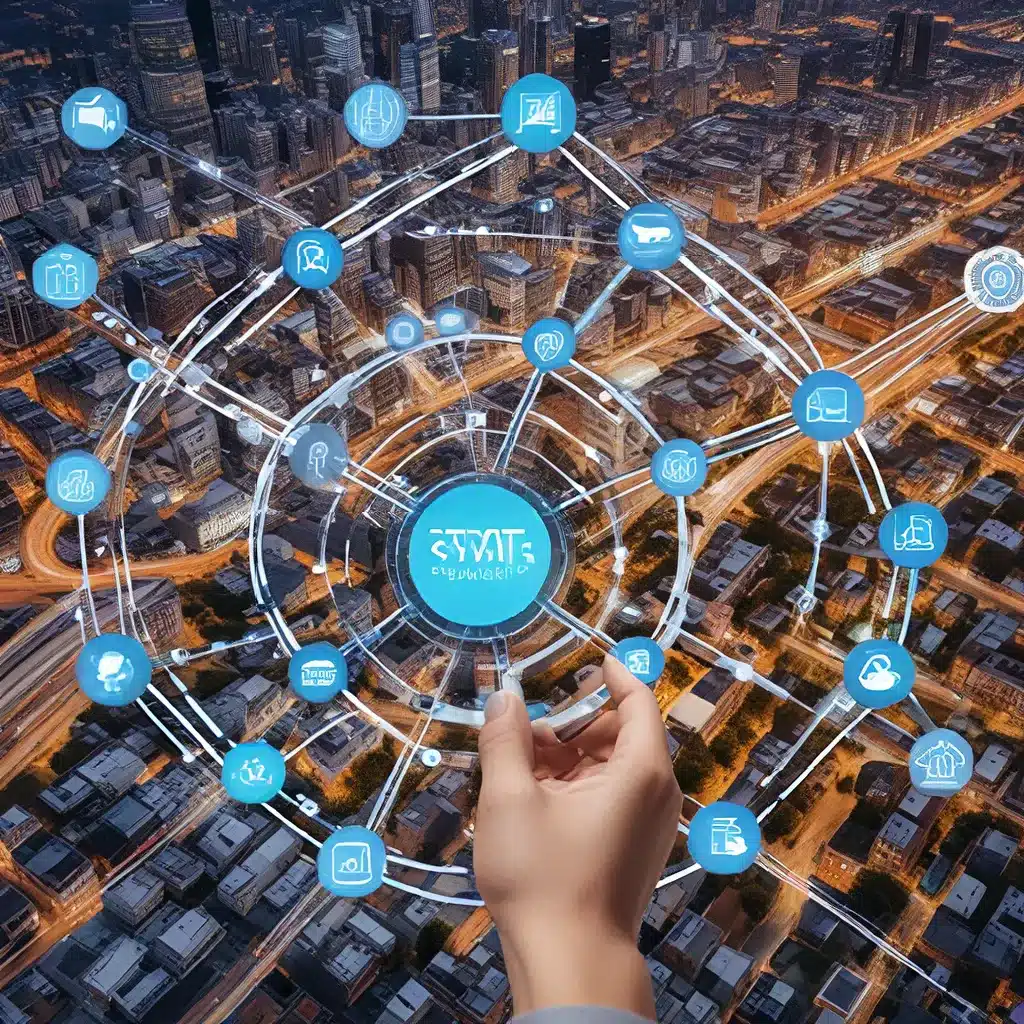
The Rise of Interconnected Sensor Networks
In the rapidly evolving landscape of IoT (Internet of Things) and sensor technologies, the concept of integrated ecosystems has emerged as a driving force behind the next generation of intelligent systems. As the world becomes increasingly interconnected, the ability to seamlessly integrate and leverage diverse sensor networks has become crucial for unlocking the full potential of smart city, industrial automation, environmental monitoring, and a myriad of other applications.
At the heart of this transformation lies the synergistic relationship between sensor networks and IoT. Sensor networks, comprising an array of interconnected devices capable of gathering and transmitting data, have become the foundation for IoT systems. By integrating these sensor networks into a cohesive IoT ecosystem, organizations can harness the power of real-time data to drive decision-making, optimize processes, and enhance user experiences.
Advances in sensor technology have played a pivotal role in this evolution, enabling the development of smaller, more energy-efficient, and increasingly versatile sensing devices. These advancements, coupled with the growing ubiquity of wireless communication protocols and cloud computing, have paved the way for the seamless integration of sensor networks into IoT architectures.
Architecting Sensor-Driven IoT Ecosystems
Designing effective sensor-driven IoT ecosystems requires a holistic approach that considers the interplay of various components. Robust network topologies, efficient data management, and secure communication protocols are just a few of the critical elements that must be carefully integrated to ensure the smooth functioning and reliability of these systems.
Network Topologies: Optimizing Connectivity
The choice of network topology is a fundamental aspect of sensor network design, as it directly impacts the scalability, resilience, and efficiency of the overall IoT ecosystem. Several network architectures have emerged, each with its own advantages and considerations:
| Topology | Description | Advantages | Challenges |
|---|---|---|---|
| Star Topology | A central hub or gateway connects all sensor nodes. | Simplicity, easy management, and centralized control. | Limited scalability and potential for single points of failure. |
| Mesh Topology | Sensor nodes form a self-organizing, multi-hop network. | Resilience, scalability, and decentralized control. | Increased complexity in routing and energy consumption. |
| Hybrid Topology | Combines elements of star and mesh topologies. | Balances scalability, resilience, and efficiency. | Requires careful coordination between different network segments. |
The choice of topology should be guided by the specific requirements of the IoT application, such as the number of sensor nodes, the spatial distribution of the network, and the criticality of the data being collected.
Data Management: Handling the IoT Deluge
As sensor networks proliferate, the volume and complexity of data generated within IoT ecosystems have grown exponentially. Effective data management strategies are essential to extract meaningful insights and ensure the scalability of these systems.
Edge computing and fog computing architectures have emerged as powerful solutions to address the challenges of data management in IoT. These approaches enable distributed processing and real-time analysis of sensor data, reducing the burden on central cloud infrastructure and minimizing latency.
Furthermore, the integration of machine learning and artificial intelligence techniques into IoT ecosystems has unlocked new possibilities for intelligent data processing and autonomous decision-making at the edge. By empowering sensor nodes with cognitive capabilities, organizations can harness the full potential of their IoT investments, driving improved efficiency, enhanced user experiences, and streamlined operations.
Security and Privacy: Safeguarding the IoT Landscape
As sensor networks and IoT systems become increasingly pervasive, the security and privacy of these interconnected ecosystems have become critical concerns. The heterogeneous nature of IoT devices, limited computational resources, and the distributed nature of these systems present unique challenges in implementing robust security measures.
Advancements in cryptographic algorithms, access control mechanisms, and secure communication protocols have been crucial in addressing these challenges. Techniques such as end-to-end encryption, device authentication, and intrusion detection are essential for safeguarding sensor data and preventing unauthorized access to IoT systems.
Furthermore, the integration of blockchain technology into sensor-driven IoT ecosystems has emerged as a promising approach to enhance data integrity, transparency, and decentralized trust. By leveraging the immutable nature of blockchain, organizations can ensure the traceability of sensor data and secure the communication between IoT devices.
Energy Management: Powering the IoT Revolution
One of the critical aspects of sensor network design and IoT ecosystem integration is energy management. As sensor nodes are often deployed in remote or inaccessible locations, ensuring efficient power consumption and extended battery life is paramount for the sustainability and reliability of these systems.
Advances in energy harvesting technologies, low-power microcontrollers, and energy-efficient communication protocols have been instrumental in addressing the power challenges of IoT. By integrating these innovations, sensor networks can operate for extended periods without the need for frequent battery replacements or manual interventions.
Moreover, the synergy between sensor networks and renewable energy sources, such as solar, wind, and thermal energy, has opened up new possibilities for self-sustaining IoT ecosystems. By combining sensor-driven data collection with intelligent energy management systems, organizations can optimize the utilization of renewable resources and minimize the carbon footprint of their IoT deployments.
Towards a Sustainable and Intelligent Future
As the world becomes increasingly interconnected, the integration of sensor networks and IoT ecosystems has emerged as a transformative force, driving innovation, efficiency, and sustainability across a wide range of industries. By embracing the synergistic potential of these technologies, organizations can unlock new opportunities for data-driven decision-making, predictive maintenance, and enhanced user experiences.
The continued advancements in sensor technologies, network architectures, data management, security protocols, and energy management will be crucial in shaping the future of smart cities, industrial automation, environmental monitoring, and beyond. As the IoT ecosystem continues to evolve, the seamless integration of sensor networks will be the key to unlocking the full potential of a connected and intelligent world.